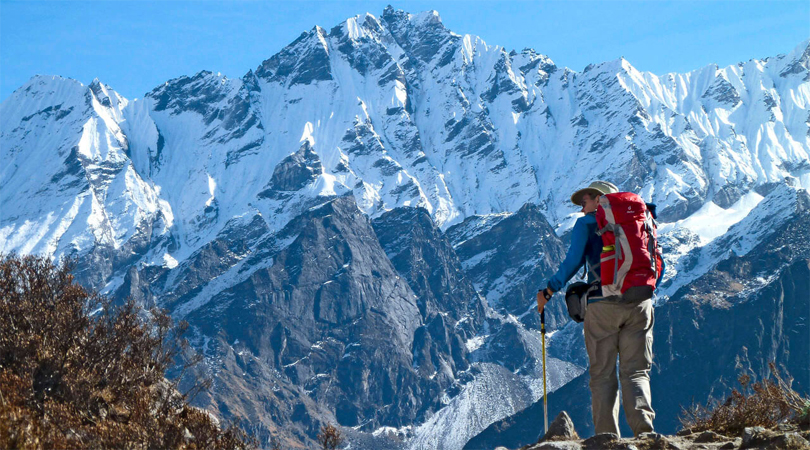

They sprawl east to west from Afghanistan through Pakistan to India into Nepal, Tibet through Bhutan and ending in Myanmar. The Himalayas cover approximately 75% of Nepal.
The Himalayas are home to many of the world’s highest mountains. Famous peaks include Everest, Karakoram (K2), Kailash, Kanchenjunga, Nanga Parbat, Annapurna, and Manasalu. The Himalayas are the third largest deposit of ice and snow in the world, after Antarctica and the Arctic. There are approximately 15,000 glaciers located throughout the range. At 48 miles (72 km) in length, the Himalayan Siachen glacier is the largest glacier outside the poles.
Mount Everest at 29,029 ft (8,848 m) is not only the highest peak in the Himalayas but the highest peak on the entire planet..
14 mountains are over 8,000 metres high, among them the K2, Nanga Parbat and Mount Everest, at 8,848 meters the world’s highest mountain. The Himalayas extend over 1,500 miles (2,400 km) from the Indus Valley in the west to the Brahmaputra Valley in the east. They are between 100 and 250 kilometres wide.
Many of the mountain peaks are sacred to the people who live in the surrounding areas. Hindu and Buddhist pilgrims go there and pray to God.
How are the Himalayas formed?The Himalayas are the result of tectonic plate motions that collided India into Tibet. Because of the great amount of tectonic motion still occurring at the site, the Himalayas have a proportionally high number of earthquakes and tremors. The Himalayas are one of the youngest mountain ranges on the planet.
The range began to form between 40 and 50 million years ago, when two large landmasses, India and Eurasia, driven by plate movement, collided. At present, the movement of India continues to put enormous pressure on the Asian continent, and Tibet in turn presses on the landmass to the north that is hemming it in, as a result, the Himalayas continue to rise more than 1cm a year..jpg)